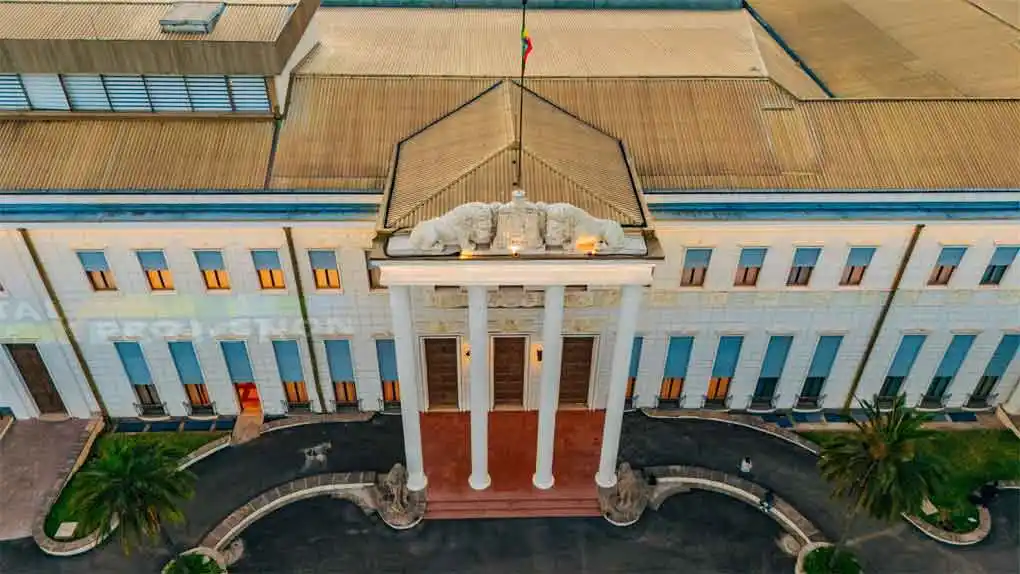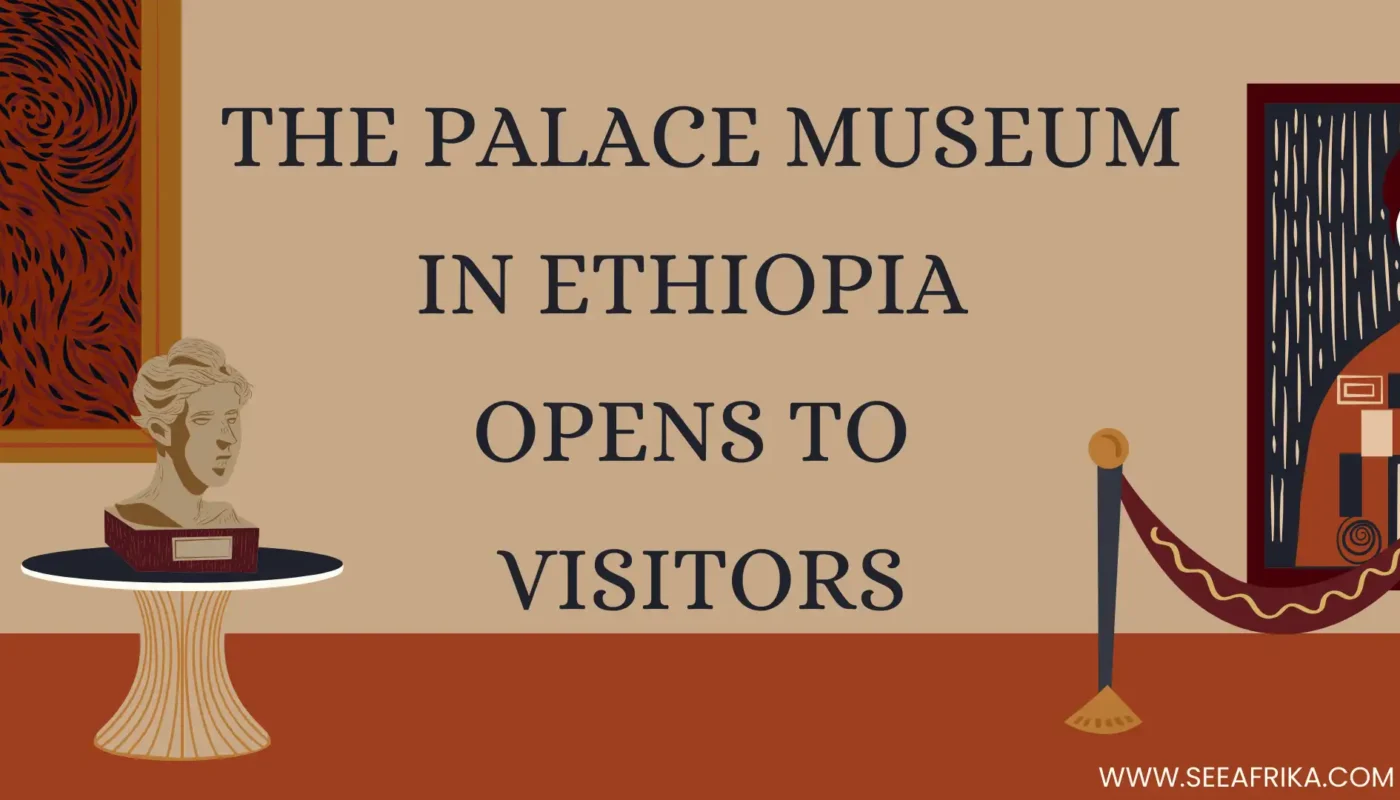The Palace Museum in Ethiopia has officially opened its doors to visitors. This grand occasion marks a significant milestone in the preservation of Ethiopian heritage. The Palace Museum in Ethiopia, located in Addis Ababa, invites both locals and tourists to explore its rich history and stunning architecture.
The opening follows extensive restoration efforts funded by various organizations. The Palace Museum in Ethiopia aims to showcase the country’s cultural treasures. Visitors can now enjoy guided tours that highlight the palace’s historical significance.
The restoration of this museum began on July 16, 2020, and took approximately four years to complete. The project aimed to transform the National Palace into a public museum while preserving its historical significance and architectural beauty. The official opening for public visits occurred on December 29, 2024, marking the culmination of extensive renovation efforts initiated under Prime Minister Abiy Ahmed’s leadership.

A Rich History Unveiled
The Palace Museum has a storied past. Originally known as the Jubilee Palace, it served as a residence for Emperor Haile Selassie. Following a coup in 1974, it became the National Palace, hosting state functions and dignitaries. Now, as the Palace Museum in Ethiopia, it opens a new chapter, focusing on education and cultural appreciation.
The restoration project included refurbishing ten historical buildings within the palace grounds. Each structure tells a unique story about Ethiopia’s imperial history. The Palace Museum is not just an architectural marvel; it is a testament to the nation’s resilience and cultural pride.
Exhibits and Attractions In the Palace Museum in Ethiopia
Inside the museum, visitors will find an array of exhibits. Artifacts from different eras showcase Ethiopia’s diverse heritage. The museum features royal regalia, historical documents, and artwork that reflect the country’s artistic evolution.
Interactive displays engage visitors, allowing them to delve deeper into Ethiopian history. The Palace Museum also plans to host special events and exhibitions throughout the year. These initiatives aim to foster a greater understanding of Ethiopia’s rich cultural landscape.
The museum, situated within the historic Unity Park, offers a rich tapestry of attractions that highlight the country’s cultural and historical heritage. Here are the main attractions that visitors can explore:
- Unity Park
Unity Park is a central feature of the Palace Museum in Ethiopia. It encompasses various attractions, including:
- Arena and Playground: Designed for families and children, these facilities provide recreational space within the museum grounds.
- Ethiopian Zoo: This zoo focuses on preserving local fauna, showcasing over 20 species native to Ethiopia, including the iconic black-maned lion.
- Three Churches: The park includes three churches that reflect Ethiopia’s deep-rooted Christian heritage.
- House of Royals: This area showcases the legacy of Ethiopian royalty, detailing their history and contributions to the nation.
- Imperial Banquet Hall: Known as “Gibir Adarash,” this hall has a storied past of hosting grand feasts and important events, including gatherings for the founding fathers of the Organization of African Unity.
- Throne Hall: The Throne Hall is one of the most significant areas within the Palace Museum in Ethiopia. It served as a meeting place for monarchs and dignitaries. Key features include:
- Golden Throne: The hall houses a large golden throne, symbolizing Ethiopia’s imperial history.
- Exhibition Space: Currently, it hosts a main exhibition that celebrates Ethiopia’s diverse cultures and historical events, illustrating the evolution of the nation through various eras.
Menelik II’s Palace Complex
This complex includes several historical buildings constructed during Emperor Menelik II’s reign. Notable sites within this complex are:
- Emperor Menelik II’s Office and Bedroom: These rooms provide insight into the personal life and governance style of one of Ethiopia’s most revered emperors.
- Council of Ministers Room: This space was used for significant political discussions and decisions throughout Ethiopian history.
- Private Prayer Room: A serene area reflecting the spiritual practices of Emperor Menelik II.
Artifacts Present
The Palace Museum in Ethiopia features a variety of exhibits that showcase:
- Royal Regalia: Items that belonged to Ethiopian emperors, providing a glimpse into their opulent lifestyles.
- Cultural Artifacts: Artifacts from different periods highlight Ethiopia’s rich history, including traditional clothing, jewelry, and ceremonial items.
- Historical Documents: Important documents that narrate Ethiopia’s political evolution are displayed throughout the museum.
The museum stands as a testament to the nation’s rich heritage and commitment to preserving its history. Visitors can immerse themselves in this unique cultural experience while exploring the various attractions within its walls.
Visitor Experience
The Palace Museum in Ethiopia offers a unique experience for all ages. Guided tours are available in multiple languages, ensuring accessibility for international guests. The museum’s staff is trained to provide insightful commentary on each exhibit.
Visitors can explore the lush gardens surrounding the Palace Museum in Ethiopia, perfect for leisurely strolls. Cafés within the museum grounds offer traditional Ethiopian cuisine, enhancing the overall experience.
Future Plans
As the Palace Museum settles into its new role, future plans include expanding educational programs. Collaborations with schools and universities will promote cultural awareness among younger generations.
The museum aims to become a central hub for cultural exchange. It will host workshops, lectures, and community events that celebrate Ethiopian traditions and arts.
Conclusion
The opening of the Palace Museum in Ethiopia marks a new era for cultural tourism in the country. With its rich history and vibrant exhibits, it promises to be a must-visit destination for anyone interested in Ethiopian heritage.
Visitors are encouraged to explore this newly opened gem and immerse themselves in the stories that shaped Ethiopia’s past at the Palace Museum in Ethiopia.
Frequently Asked Questions
Can visitors see the royal regalia at the Palace Museum in Ethiopia
Yes, visitors can see the royal regalia at the Palace Museum in Ethiopia. The museum features a collection of royal artifacts, including crowns, robes, and other significant items that belonged to Ethiopian emperors. These exhibits provide a glimpse into the opulent lifestyles and rich history of Ethiopia’s monarchy, showcasing the country’s cultural heritage and imperial legacy
What is the best time of year to visit the Palace Museum in Ethiopia
The best time to visit the Palace Museum in Ethiopia is between October and May. During this period, the weather is generally warm, dry, and sunny, making it ideal for sightseeing and exploring the museum’s attractions. This timeframe coincides with the dry season, which is also the peak tourist season, so visitors can expect vibrant cultural events and festivals during these months.
How long does it take to fully explore the Palace Museum in Ethiopia
Exploring the Palace Museum in Ethiopia typically takes about 1 to 2 hours for a thorough visit. This timeframe allows visitors to tour the museum’s exhibits, including royal regalia and historical artifacts, as well as to walk around the palace grounds. However, if combined with a broader tour of nearby attractions, such as Unity Park and other museums in Addis Ababa, visitors may spend 6 to 8 hours in total to fully experience the cultural offerings of the area




